Chapter 5
Disassembling the Coronal Restoration
Aim
To outline techniques required to disassemble coronal restorations, including post removal, and gain entry for non-surgical retreatment.
Outcome
At the end of this chapter, the practitioner should be familiar with techniques to remove coronal restorations and safely remove a variety of post systems.
Introduction
Coronal access is required to enable non-surgical retreatment of an endodontic failure. The methods involved are dependent on the nature and quality of the coronal restoration, some of which may be retained while others may need to be removed completely.
Coronal Restoration
When planning access for retreatment, it is tempting to try and preserve an existing coronal restoration especially if it is:
-
technically and aesthetically adequate
-
relatively new
-
replacement may be costly.
Directly placed intracoronal restorations present no problems, as replacement is relatively easy and inexpensive. If a crown or bridge is present, however, and it may be removed without any damage to the restoration and underlying tooth structure then its preservation may be acceptable. Unfortunately, this is often not possible so it is prudent not to make promises to patients before embarking on treatment.
The desire to preserve a coronal restoration should not be at the expense of having to compromise the requirements of satisfactory access, namely to:
-
unroof the entire pulp chamber
-
enable an unobstructed view of the canal entrances
-
allow instruments to negotiate canals unimpeded
-
help retain a temporary restoration.
It is pointless to try and preserve an existing restoration if it jeopardises retreatment; the consequences of retaining a coronal restoration may be great if, because of restricted access, a technical error such as perforation occurs or effective infection control is not achieved.
If the existing coronal restoration requires replacement, there is no need to consider its retention, and the restoration may be removed. The advantages of removing coronal restorations for retreatment, include:
-
revealing the state of the underlying tooth structure (Fig 5-1)
-
improved vision for the removal of hidden caries
-
elimination of covert microleakage
-
meticulous inspection for any suspected cracks and fractures
-
excellent access for the identification of missed canals.
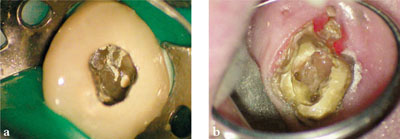
Fig 5-1 Advantage of removing the coronal restoration. (a) Occlusal access cavity in crown. (b) The real picture when the crown is removed!
Whatever the decision, if it is likely that an existing coronal restoration will be damaged, destroyed or need to be removed, then the patient should be advised accordingly, before commencement of retreatment. Patients are more accepting of the need to remove a crown or bridge for retreatment if they are given prior warning.
Factors to consider when deciding whether to retain or remove the coronal restoration are summarised in Fig 5-2.
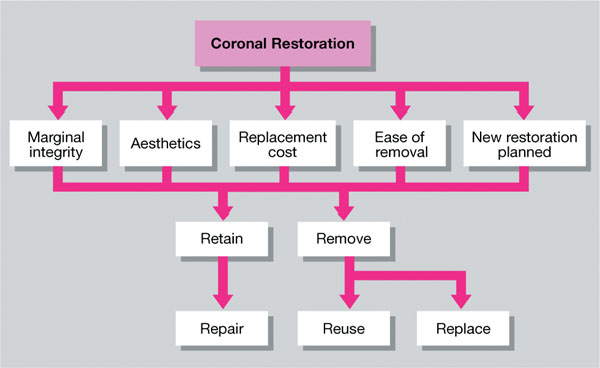
Fig 5-2 Factors to consider when deciding whether to retain or remove the coronal restoration.
Coronal Restoration Removal
Before the coronal restoration is removed, it is crucial to plan the provisional restoration. This may entail taking an impression for chairside fabrication of a temporary restoration or arranging for a laboratory-made temporary replacement. If the tooth is badly broken down, it should be restored beforehand, to protect the remaining tooth tissue and to prevent coronal leakage. A new filling, an orthodontic or copper band or possibly a temporary crown may be needed. For decoronated anterior teeth, an overdenture may be the preferred option, avoiding the risk of cement failure and leakage associated with multiple temporary post crowns.
Crowns and bridges may be removed with a variety of devices; some of which may damage the restoration in the process.
Grasping forceps
Haemostats, some tungsten carbide-tipped, and extraction forceps, such as upper anteriors (Ash 1 & 113, Dentsply Ash Instruments, Weybridge, Surrey, UK) and upper roots pattern (Ash 76 & 76N) may all be used. Great care must be exercised as the haemostat or forceps may slip, especially on porcelain surfaces on which it is difficult to gain good purchase; the porcelain may also break or fracture teeth.
There are also a number of dedicated crown and bridge removal devices on the market (e.g. Carl Martin, Solingen, Germany) (Fig 5-3). The jaws of these grasping devices may have plastic or rubber inserts (Fig 5-4), which may be coated with adhesive or emery powder to prevent slippage, allowing the necessary axial force to be applied more effectively. The action is essentially a pull with some gentle rotation. Care should be taken to avoid injuring adjacent and opposing teeth.
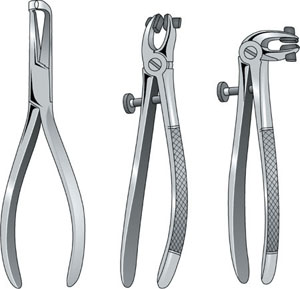
Fig 5-3 Examples of crown removal devices.
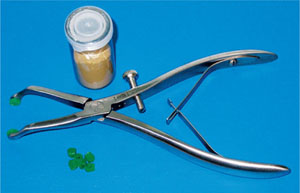
Fig 5-4 Crown and bridge forceps with plastic jaw inserts and adhesive powder in bottle meant for improving grip.
“Sticky sweet” method
The Richwil crown and bridge remover (Almore International Inc., Portland, OR, USA) (Fig 5-5) is a block of water-soluble, pliable resin, not unlike a sticky sweet. It is first softened in hot water (? 63°C) for 1–2 min, removed and excess moisture blotted off. As a precaution, it may be tied with a length of dental floss to aid retrieval in case of accidental ingestion or aspiration. The conditioned resin block is then placed on the restoration to be removed and firm digital pressure applied until it adheres. Next, the patient is asked to bite down, compressing the resin block to two-thirds of its original thickness. Holding this position, the resin block is cooled by spraying with cold water. The patient is then asked to open quickly, generating sufficient force to loosen and lift the restoration. Although marketed as a non-traumatic method, this technique is often not very effective and carries the risk of damaging the opposing tooth or dislodging its restoration. Therefore, always look at the state of the opposing tooth and restoration before using this method!
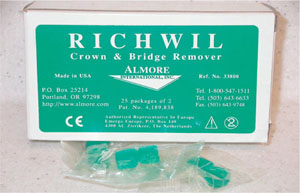
Fig 5-5 Richwil crown and bridge remover.
Levering instruments
A hole of an appropriate size is first made through the occlusal surface of a crown before inserting a straight excavator or Mitchell’s trimmer to lever it off. Again, care must be exercised – in particular, with porcelain fused to metal crowns, as the porcelain is likely to break off, even if only a gentle force is applied.
Wedging devices
A slot is cut in the crown using the side of a long-shank tapered bur. This slot is usually cut on the buccal and sometimes extending onto the occlusal surface of the crown. The cut should be made right through at the gingival margin of the restoration and into the cement lute (Fig 5-6a, b). Generally, diamond burs are best used to cut porcelain and tungsten carbide burs for metal. Special “Transmetal” burs (Dentsply, Weybridge, Surrey, UK) for sectioning metal crowns are also available.
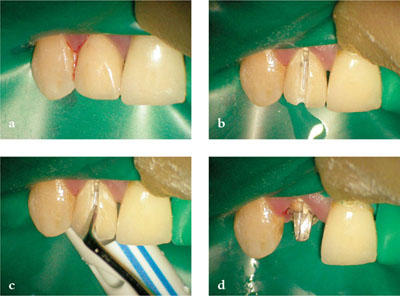
Fig 5-6 Crown removal sequence. (a) A porcelain bonded to metal crown on the lateral incisor. (b) A slot is cut into the crown. (c) A modified flat plastic instrument is used to loosen and wedge the crown apart. (d) The crown successfully removed.
A flat plastic instrument, straight Warwick James or Coupland elevator, modified by flattening the edge (Fig 5-7), is then inserted into the slot to wedge the crown apart (Fig 5-6c), “peeling” it off the tooth (Fig 5-6d). Specially designed crown splitters/separators are also available (Carl Martin, Solingen, Germany) (Fig 5-8) for this purpose.
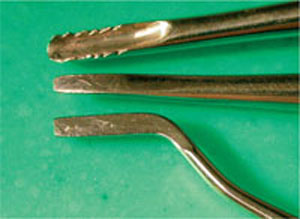
Fig 5-7 Modified instruments used as wedging devices.
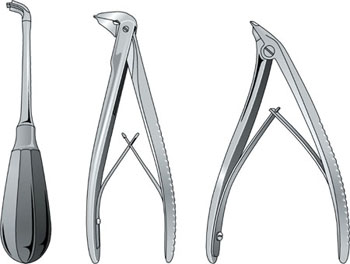
Fig 5-8 Specially designed crown splitters and separators.
Tapping and pneumatic tools
A straight chisel and a mallet may be used to tap off a crown. Other devices (Fig 5-9), some spring-loaded, allow the application of tapping forces to loosen the crown. It is often difficult, however, to “hook” well-fitting restorations and apply sufficient force to dislodge the restoration. Bridges can usually be engaged in their embrasures.
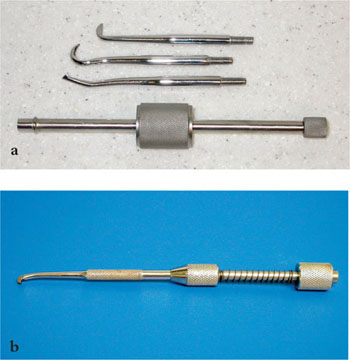
Fig 5-9 Crown and bridge removal tapping devices. (a) Weighted. (b) Spring-loaded.
The KaVo Coronaflex 2005 device (KaVo Dental Ltd., Amersham, Buckinghamshire, UK) (Fig 5-10) works by delivering a pneumatically generated force at high velocity along the long axis of the tooth, minimising the risk of tooth fracture. Crowns and bridges removed successfully using this method can be reused and recemented but there can be no pretreatment guarantees. If the restoration needs to be removed for successful retreatment, this must be the overriding consideration even if the restoration has to be sacrificed in the proc/>
Stay updated, free dental videos. Join our Telegram channel

VIDEdental - Online dental courses


